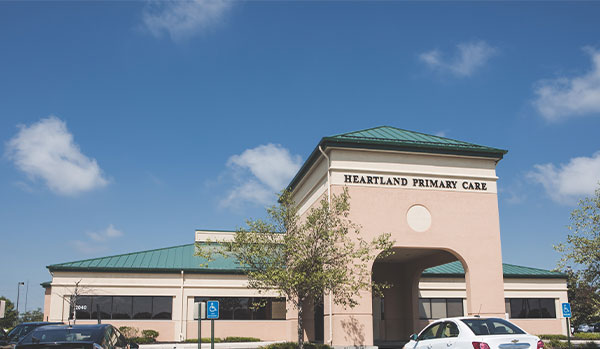How to Find Dependable Urgent Care Clinics in Your Location
How to Find Dependable Urgent Care Clinics in Your Location
Blog Article
The Significance of Urgent Care Centers in Bridging the Void In Between Medical Care and Emergency Situation Providers
Urgent care centers have actually emerged as a vital component of the medical care landscape, efficiently dealing with the critical need for prompt medical focus without turning to emergency situation solutions. By providing treatment for non-life-threatening conditions, these facilities help to ease the worry on emergency clinic and improve person accessibility to timely treatment. Their extended hours and varied solutions accommodate an expanding populace looking for choices to conventional primary care. The developing role of urgent treatment centers raises vital concerns about their combination within the wider medical care system and the implications for individual end results and resource appropriation.
Overview of Urgent Care Centers
Urgent care centers have become a vital part of the health care distribution system, offering accessible clinical services for non-life-threatening conditions. These facilities commonly operate outdoors standard office hours, offering clients a choice to emergency clinic and main care settings. Individuals looking for urgent care typically present with problems such as small injuries, infections, or ailments that need punctual attention but do not pose a prompt danger to life or arm or leg.
Immediate treatment facilities are staffed by a series of health care experts, consisting of medical professionals, nurse professionals, and physician assistants, that are outfitted to identify and deal with different medical concerns. They usually feature diagnostic devices such as X-ray machines and research laboratory solutions, allowing them to give detailed treatment on-site.
The facility of immediate care centers has actually been affected by the increasing need for timely medical solutions in a busy culture, where individuals may struggle to protect visits with medical care providers. Therefore, these facilities aim to ease blockage in emergency divisions, improving total health care efficiency. Furthermore, urgent treatment centers often function as a bridge in between health care and emergency solutions, ensuring that clients obtain appropriate treatment tailored to their certain clinical needs.

Advantages of Urgent Care Provider
Accessing timely medical treatment is a substantial advantage of urgent treatment services. These facilities offer immediate attention for non-life-threatening conditions, successfully minimizing delay times compared to typical emergency divisions. Clients looking for look after minor injuries, diseases, or urgent health issues can acquire treatment without the lengthy delays often connected with medical facility check outs.
Another secret benefit is the prolonged hours of operation. Numerous immediate treatment centers are open nights and weekend breaks, fitting patients that may not be able to see their medical care supplier during typical workplace hours. This versatility makes immediate treatment an available choice for those with busy timetables or unexpected health and wellness concerns.
Moreover, immediate treatment centers often provide a large range of services, consisting of analysis testing, X-rays, and standard laboratory solutions. This detailed technique allows for quick medical diagnosis and therapy, improving person satisfaction.
Furthermore, urgent care centers are commonly more cost-effective than emergency areas, making them an eye-catching option for individuals without insurance policy or those with high-deductible strategies. In general, immediate care solutions play a critical function in providing easily accessible, timely, and inexpensive healthcare.
Comparison With Medical Care
Typically, patients commonly weigh their choices in between urgent care centers and medical care providers when looking for clinical focus. Both serve crucial roles in the medical care system, yet they vary substantially in range, expense, and access.
Main treatment service providers are generally the initial factor of call for patients, concentrating on long-term health management, precautionary care, and chronic illness administration. They provide connection of treatment, fostering a patient-provider relationship that permits for thorough health and wellness analyses and tailored therapy plans. Scheduling a visit can be time-consuming, frequently requiring days or weeks in breakthrough. Urgent Care.
On the other hand, immediate care facilities offer prompt treatment for non-life-threatening conditions that need punctual interest, such as minor injuries or infections. These centers often operate beyond typical office hours, suiting people that may not be able to visit their primary treatment supplier during normal organization times. Furthermore, urgent treatment is generally more cost-efficient than emergency room sees, making it an attractive option for those with minimal medical care gain access to.
Ultimately, while urgent treatment facilities and medical care carriers both add to individual health, they accommodate unique demands, making it crucial for individuals to identify which alternative best lines up with their conditions.
Emergency Providers Communication
The interaction in between immediate care facilities and emergency solutions is an important element of the healthcare landscape, specifically when people deal with scenarios that may rise in seriousness. Immediate treatment centers function as a bridge between main treatment and emergency departments, addressing non-life-threatening conditions that need prompt interest. This cooperation boosts patient end results and maximizes resource appropriation within the health care system.
When people present with immediate however not lethal concerns, urgent care centers can efficiently handle their needs, minimizing blockage in emergency clinic. Facilities equipped get redirected here with analysis capabilities can facilitate prompt referrals to emergency services when a patient's condition surpasses the range of immediate care treatment. This smooth communication aids make certain that people obtain the ideal level of care without unnecessary hold-ups.
In addition, efficient communication in between immediate care suppliers and emergency situation services is essential. Sharing client info and treatment backgrounds promotes coordinated care, lessening the danger of repetitive tests and treatments. As healthcare continues to progress, have a peek at this site the vibrant connection between immediate treatment centers and emergency situation services will play a pivotal duty in enhancing patient care performance, contentment, and general health results within the community.
Future of Urgent Treatment Facilities
As health care needs progress, the future of urgent treatment facilities is poised to come to be increasingly important to the overall medical environment (Urgent Care). These centers are most likely to increase their roles by including sophisticated modern technologies, such as telemedicine, synthetic knowledge, and digital health record assimilation. This will enhance individual accessibility and improve treatment coordination in between immediate treatment, health care, and emergency situation services
Furthermore, immediate treatment centers are anticipated to expand their service offerings to include precautionary care and persistent disease management. This shift will position them as crucial parts in taking care of populace wellness, decreasing the problem on emergency situation departments, and resolving voids in health care accessibility.
The expanding fad of value-based treatment will even more increase the improvement of immediate care centers, motivating them to concentrate on person end results and satisfaction. Facilities might also adopt collaborative method versions, working carefully with specialists and medical care providers to guarantee comprehensive patient administration.
Verdict
In final thought, urgent treatment centers offer an essential feature in the health care system by providing instant access to treatment for non-life-threatening problems, efficiently alleviating stress on emergency situation solutions. Their extended hours and diverse variety of solutions improve person benefit and satisfaction, while likewise guaranteeing ideal care shipment. As healthcare requires remain to progress, the function of urgent treatment centers will likely become significantly significant, more bridging the space in between medical care and emergency services.
The facility of urgent treatment centers has been influenced by the raising need for prompt clinical solutions in a fast-paced society, see post where individuals might struggle to protect appointments with key treatment carriers. In addition, urgent treatment facilities often serve as a bridge between key treatment and emergency services, guaranteeing that people receive suitable care tailored to their details clinical needs.
Many urgent treatment facilities are open evenings and weekends, fitting people who may not be able to see their key treatment copyright throughout typical office hours (Urgent Care). As healthcare continues to develop, the dynamic partnership between immediate treatment facilities and emergency solutions will certainly play a pivotal role in enhancing person care efficiency, complete satisfaction, and overall health and wellness outcomes within the neighborhood

Report this page